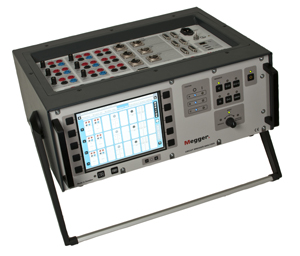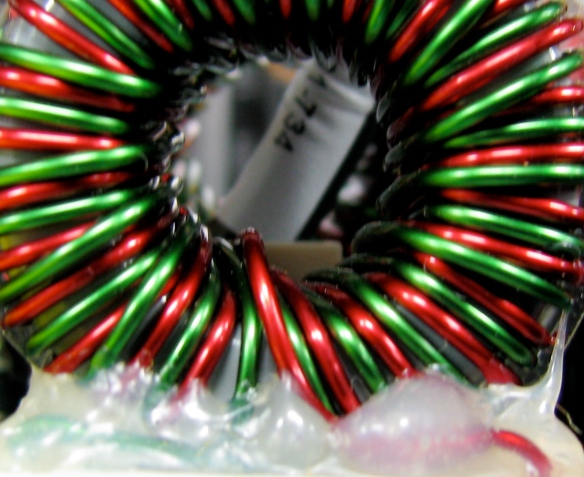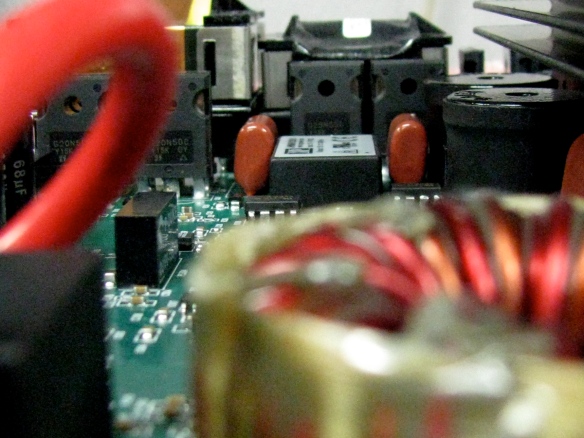As a kid, being grounded is a negative. We don’t get to watch our favorite show on TV or visit a movie theater to see “The Avengers” with our friends. As an adult in the power industry, being grounded becomes quite the positive. In fact, being grounded is one way to keep that favorite TV on and that favorite movie playing by preventing a short-circuit catastrophe within the electrical system. A good protection system relies on low-resistance electrical paths to assist relays when there’s a fault in play. In simple terms: grounding this stuff help keeps your TV on.
Electrical ground or putting a good overall grounding system in place—one that protects both your personnel and your infrastructure—takes a bit of forward thinking. You’ve got to examine weather issues, safety issues, mathematics and dirt. Yep, just like when you were a kid, you get to go back to playing in the dirt.
While this is, by no means, an extensive or complete step-by-step guide to electrical grounding and earth resistance testing, do keep these ten items in mind.
1. For comprehensive coverage, it’s all about the soil. We tend to think of dirt as a rather basic, single element. The truth is, there are all kinds of dirt: rocky, clay, sandy. And, just as each of those categories can impact growing plants in the dirt, it can also impact electrical resistance. Generally speaking, all soil has some electrical property, just as your body does. But, on the whole, dirt’s a rather poor conductor—at least, it’s not as good as, say, copper wire. Still, get yourself a big enough path, and even dirt can be a decent conductor. And, helpfully, it’s everywhere. Unfortunately, there’s a lot of geography in this step. You don’t need to know just the type of soil, you need to know stratification, moisture, temperature and chemical composition to figure out the resistant factor and your needs. Never was playing in the dirt so darn complicated. (See table.)
2. Send people who know stuff. Knowledge is the most effective tool for all types of field work, and it becomes that much more valuable in applications where variables are as large and uncontrollable as they are in ground testing. Bottom line: This is important. So, don’t send a rookie. Don’t think, “Eh. It’s not that difficult. How much trouble can he get into?” The fact is: Grounding isn’t as simple as banging a metal pole into the earth for testing. And electricity is dangerous. Send the pro. He can bring the rookie.
3. Do a dry run. Assess the site and recent conditions. Take a look around before testing. Get the lay of the land and take a look at weather cycles as well. This will help you make an educated decision as to where test results may fall in the min/max testing cycle. Then, proceed accordingly. At the least, arrangements should be made to retest at a suspected worst time.
4. Pay attention to schedules when it comes to maintenance. If a maintenance schedule is established, be judicious about the interval. Those are important. Don’t let those times lag and maintenance fall by the wayside. For most electrical maintenance, a regular schedule—for instance, annually or semi-annually—is the order of the day.
5. Forget schedules when it comes to ground testing. Testing at regular intervals will result in readings being taken under the same general weather conditions year in and year out. If these are optimal times of year, a false sense of security can develop. Instead, test at irregular intervals, like 5, 7, or 11 months, so that all times of year and all weather conditions will be evaluated. A “worst case” will be recognized and, if necessary, the grid can be expanded or improved so that there will be no unpleasant surprises—no shocks, if you will. If you don’t know what your ground is like in every season, you’re doing yourself a disservice.
6. Don’t fear the winter. Testing in every season means that, likely, you’ll get to work when your fingers are freezing, when there’s a storm watch or, even, when it snows. But, being methodical and thorough will prevent the cold from impacting your tests. First, the steps: the test rods must be driven through the frost layer. Then, the ground tester must establish a minimum amount of current through the soil in order to meet its measurement parameters and to sense the voltage drop across the measured resistance. (Modern testers include indicators that will warn the operator if these parameters are not being met.) Additional measures must then be taken, such as driving deeper rods, to bring the test setup within specifications. (Pouring hot water provides only a marginal temporary advantage and may backfire by freezing solid around the probe and making it nearly impossible to remove.) But, once an adequate setup is accomplished, testing under snow is just as reliable as at any other time.
7. Sometimes snow can be an advantage. We know it seems unlikely. But, when snow falls early in the season, before the first major frost, it may thermally insulate the ground and limit frost penetration to more workable depths, say 6-8 inches. If snow has been plowed or drifted away, frost penetrates deeper and test results may be rendered less consistent. Testing under snow can actually be more reliable. Just shovel away an area large enough to drive the test rods.
8. Don’t be a wet weather hero. No one is likely to want to perform a ground test in a driving rain or with lightning about, even if miles away. Well, no one sane. Besides, Benjamin Franklin already did that dangerous bit of testing for electricity; no need to repeat this. Don’t even think about it. So, dangerous conditions are to be avoided because of the risk to the operator. Dangerous voltages developing on the power lines can also be transmitted through the grounding system and will appear at the terminals of a tester if a test is in progress.
9. Consider the instrument. But aside from those extreme Benjamin Franklin circumstances, ground testing can be performed on moist or rainy days. The sudden appearance of a slight shower shouldn’t set you on a dead run to the truck as long as you’re working with the correct instrument for your environment. The determining factor here is the IP rating of the instrument.
10. Mind your “I”s and “P”s. This IP rating should be available in the instrument’s specifications and is commonly referred to as Ingress Protection. IP ratings were established by the International Electrotechnical Commission (IEC) in Standard #529, and provide a means of evaluating the effectiveness of an instrument’s casework in keeping out dirt and moisture. The IP rating consists of two numbers and both cases, the higher the better. The first number indicates how well the instrument is sealed against particle invasion, with six being “dust tight.”
Quarries and mines are particularly bad environments in this regard, while a steady wind in a dusty environment can also pose a hazard to the instrument. The second number in the rating refers to moisture ingress, with eight, the highest rating, translating to “continuous immersion.” Since ground tests are not performed under water, this would be overkill. But note the IP rating and obtain an instrument that is adequate to the rigors of your fieldwork.
Armed with soil and weather knowledge, experience and a good instrument, the skilled technician will finish that ground test in no time flat—well, unless he has to shovel some snow first.
Browse Megger ground testing equipment







